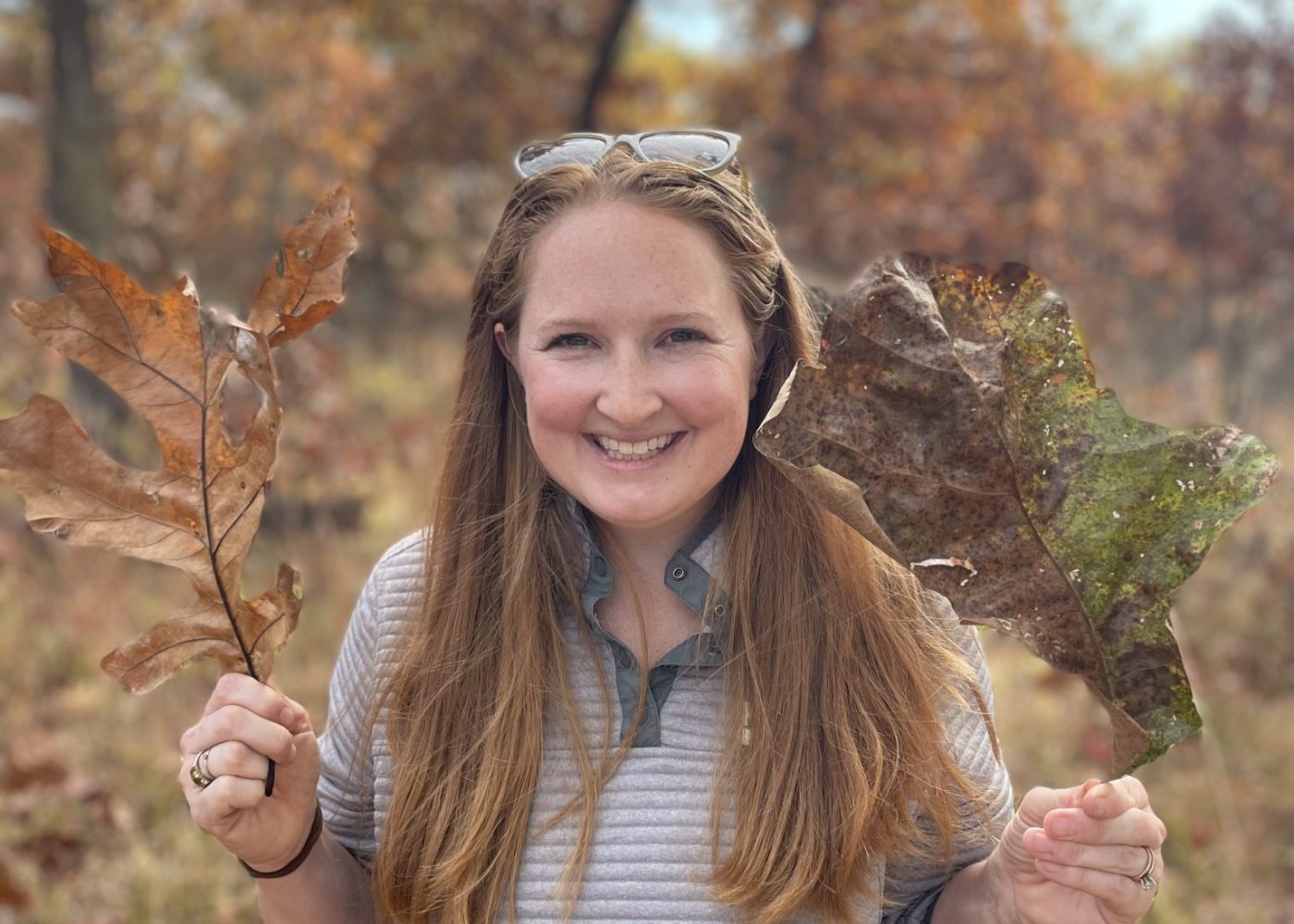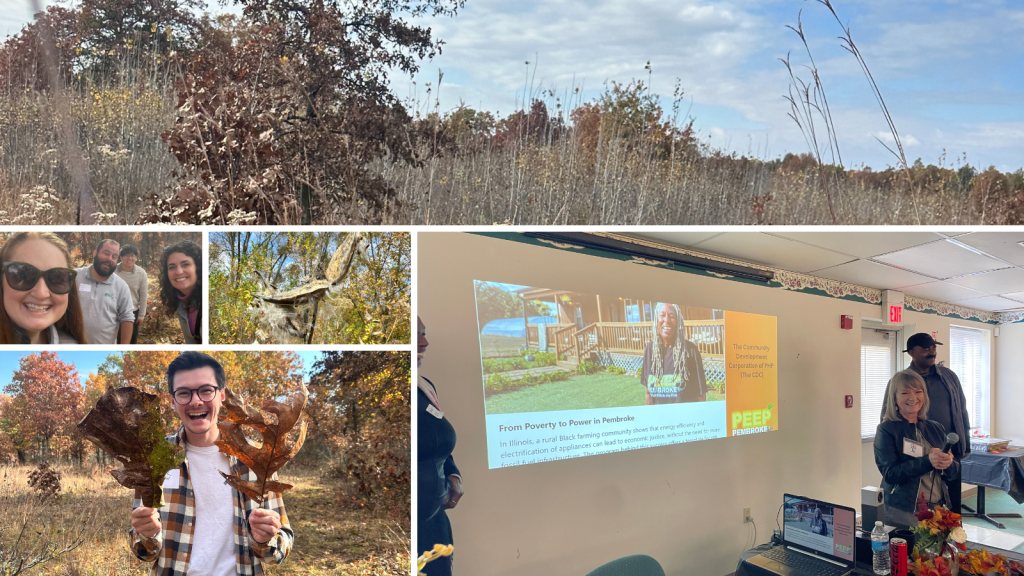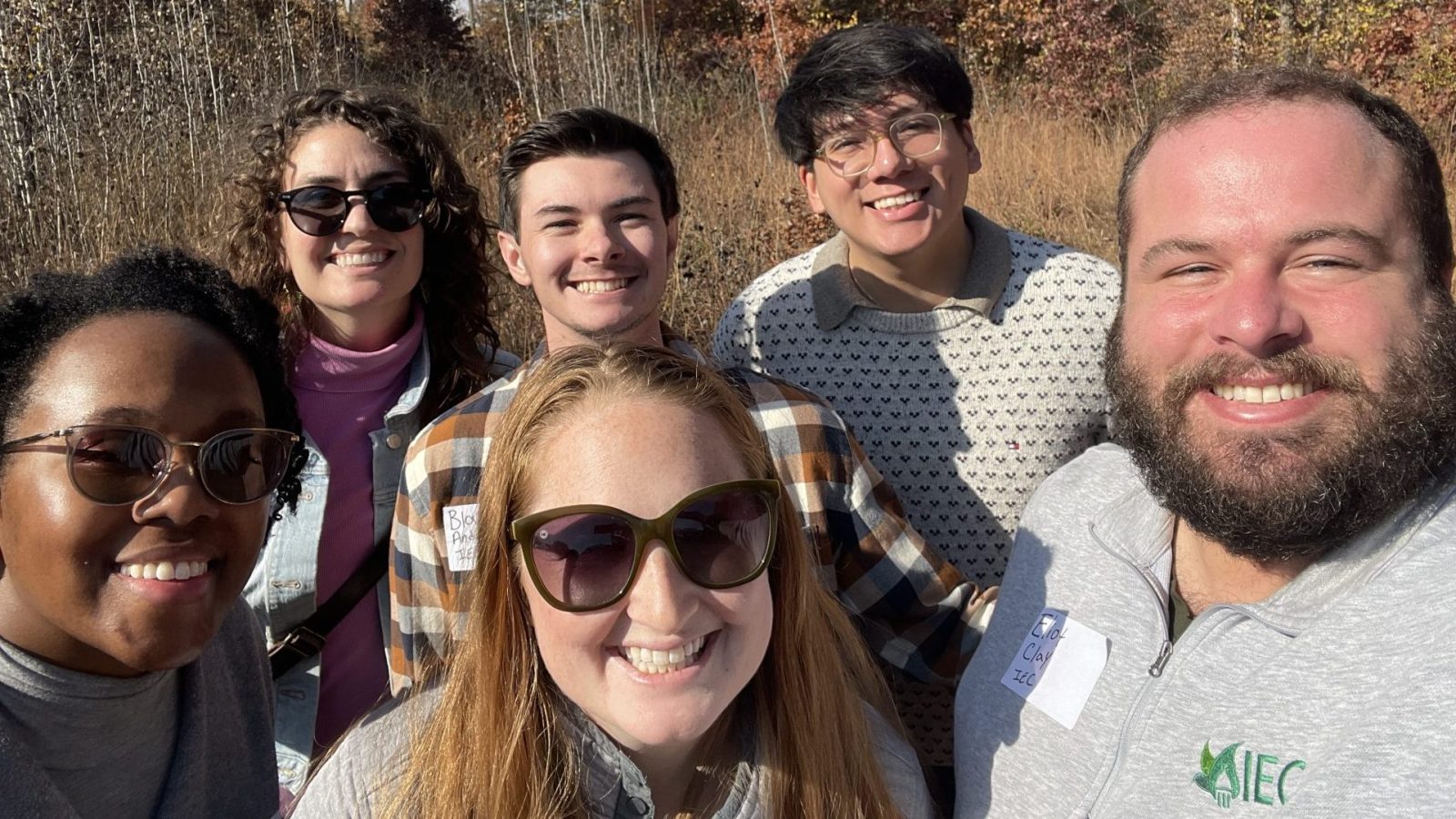By: Sergio Vargas, Chicagoland Conservation Manager
In early October, the Community Development Corporation of Pembroke-Hopkins Park closed on 29.85 acres of high-quality black oak savanna with help from groups such as Illinois Audubon Society, the Illinois Clean Energy Community Foundation and Openlands. On October 25th, IEC’s Lindsay, Eliot, Blake, Ariel, Chelsea, and I were invited to the awakening of Okàn Savanna in Pembroke Township. This project demonstrates community conservation principles, partnerships, and a dedication to the land. We could barely contain our excitement as we drove the two hours south of Chicago and two hours north of Springfield to convene upon the savanna.
Okàn Savanna represents a massive step forward in ensuring that rare natural areas are kept safe from destruction. We are fortunate that members of the community led the effort to protect this beautiful piece of land for the purpose of preserving history, nature, and culture. At IEC, we fight for the protection of critical natural areas, especially those designated as having high ecological value. In the face of development, it is more important than ever to support community-focused efforts to secure the future of these lands.

Community Through Farming
Pembroke Township, with its current population of nearly 1,500 people, has roots as a Black farming community. Founded by formerly enslaved people, this community grew after the 1860s and was likely a stop for freedom seekers along the Underground Railroad. Despite sandy soil that made farming challenging, the farmers in this community made do with what they had, relying on ingenuity. This unique intersection of agriculture and community is reflected in Pembroke’s history as the largest historically Black farming community north of the Mason-Dixon line.
An Identity Tied to the Land
However, as is common with conservation, there have been complexities regarding property rights, land use, and economic impact in the Pembroke community and surrounding area. It’s understandable that the rich cultural history and challenges that residents have faced for decades creates a strong sense of identity tied to the land. It’s important that large conservation organizations respect this connection and listen to concerns regarding the preservation of heritage and livelihoods.
This initiative centered and uplifted the perspectives of locals. It actively engaged residents to ensure that they were listened to, respected, and part of this historic moment. The CDC-PHP’s commitment to building a space that benefits the community is clear. A 6,000 sq. ft. building is set to become a nature center and community hub, providing environmental education, after-school programs, and a meeting place for residents that will facilitate and reinforce the rich cultural and natural heritage this community has built.
Conservation Through Community Involvement
Our walk through the trailhead, surrounded by the beautiful fall colors and rich, golden pockets of sand, provided the perfect backdrop for some deep reflection. I am grateful to bear witness to an example of conservation done right. When efforts are grounded in community involvement and partnerships are built with trust, a strong shared vision emerges. This effort exemplifies the community’s commitment to honor the past as it looks to the future.

About the Author
Sergio Vargas joined the Illinois Environmental Council in the Summer of 2022. He develops and maintains partnerships with volunteers, individual supporters, affiliate organizations, partners, and ally organizations to further IEC’s climate and conservation goals in Chicagoland.

